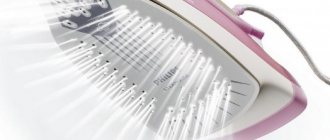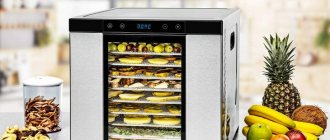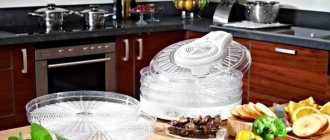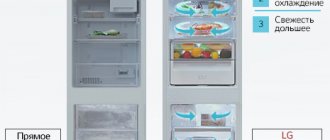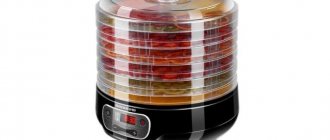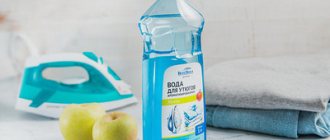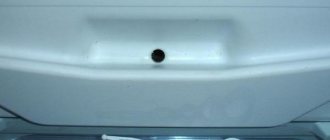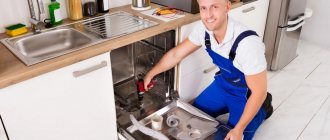- Refrigerator repair
- Note to the hostess
Have you opened the refrigerator to get something to eat and suddenly discovered that a fair amount of water has collected under the fruit and vegetable drawers?
You wiped it once, then again, but the water appears again and again. If you look closely, you may have noticed ice build-up in the area of the refrigerator drainage hole. There may also be an unpleasant odor in the refrigerator. What is this? Breaking? Let's say right away that the presence of moisture inside the refrigerator compartment is only permissible on the back wall and only for refrigerators with a drip defrost system. It shouldn't be under the drawers at all. However, if you do find water in the refrigerator compartment, this does not always indicate a breakdown of any component of the unit. In some cases, this problem can be fixed by yourself.
Determine your refrigerator type
In order to understand the reason for the appearance of water under the fruit and vegetable drawers inside the refrigerator, first find out the structure of the refrigerating chamber of your unit. In modern two-chamber refrigerators (whether your refrigerator is a foreign brand Bosch, Samsung, Indesit or a domestic one - Biryusa, Atlant) it can be of two types:
- With drip defrosting system. This type includes refrigerator models with the so-called “crying back wall”. They work as follows. The evaporator of the refrigeration compartment is located behind the rear wall of the chamber. During the cooling cycle, it and the rear wall of the chamber are covered with frost. When the set temperature in the refrigerator compartment is reached (usually from +4°C to +8°C), cooling stops and the temperature of the evaporator and rear wall rises, tending to the values in the chamber. As a result, the frost begins to melt and droplets of water form on the back wall of the refrigerator compartment, which flow into the drain hole at the bottom of the chamber. This cycle is called defrost. Then the moisture flows through the outlet hose into a special tank, where it is completely evaporated. The reservoir is located directly above or next to the refrigerator compressor.
- With No Frost system. In refrigerators with a No Frost system in the refrigerator compartment (also called Full No Frost, i.e. complete No Frost), there is no evaporator in the refrigerator compartment. Its cooling occurs due to the evaporator of the freezer. The fan located behind it forces air from the freezer and refrigerator compartments through the evaporator. Passing through it, the air is cooled and supplied to the products through a system of channels. In this case, most of it is sent to the freezer, and a smaller part is sent through an additional channel to the refrigerator. The flow of cold air into the refrigerator compartment is regulated by a special air damper. It closes using a reed sensor when the set temperature in the chamber is reached (from +4°C to +8°C) and opens again when the temperature rises.
Reasons for water accumulation in a refrigerator with a No Frost system
In such models there is no evaporator in the main chamber. The main refrigerator compartment is cooled with the participation of the lower compartment. A fan located behind the evaporator ensures that cold air flows upward into the main chamber. The volume of cold air is regulated by an air damper with a reed switch. When the required cooling in the upper chamber is achieved, the sensor is triggered and the damper closes. When the temperature rises, the damper opens again.
Water accumulation occurs due to a failure in the evaporator defrost system. This problem is indicated by continuous operation of the compressor, the appearance of a “fur coat” in the freezer, as well as warming in the main chamber.
A failure in the defrost system may occur due to a broken timer. The cause may also be a failure of the evaporator heater or sensor.
If the evaporator does not defrost, the chamber is not cooled enough. To achieve the required cooling, the freezer compartment begins to work more intensively, with almost no defrosting breaks. This leads to ice buildup. As a result, the evaporator air channel becomes frozen. When thawing, the ice melts and water flows back into the compartment.
Drip defrost system: we eliminate the cause of water in the refrigerator compartment ourselves
1. Drain hose or hole is clogged. If water regularly accumulates in a refrigerator with a “crying” evaporator underneath the fruit and vegetable drawer, then most likely the drainage is clogged. Its purpose is to remove melt water from the refrigeration compartment into a special tank located near the compressor. Drain blockages occur due to the characteristics of the drip defrost system: dust, crumbs, food residues, etc. can get into the drainage hole along with drops of melt water (which can cause an unpleasant odor in the refrigerator). When the drain is clogged, the water cannot escape. It stands in the drainage, and the excess flows to the bottom of the refrigerator, just under the drawers. During the cooling cycle, the water in the drain often freezes and ice forms in and around the drain hole. Ignoring a clogged drain hole for a long time can lead to freezing of the refrigerator compartment evaporator (it will not have time to thaw) and loss of cooling capacity. At the same time, the refrigerator compressor will turn off less often to compensate for the lack of cold.
In order to restore normal operation of the refrigerator, you should clean the drain hole.
Below are two possible cleaning schemes that should be applied sequentially. Scheme No. 1. Cotton swab + syringe
- Unplug the refrigerator. Before starting work, unplug the refrigerator and remove the fruit and vegetable drawers from it.
- Clean the drain hole. If there is no ice around the drainage hole, try clearing it with a cotton swab or similar non-sharp object. Many models include a special device designed for this purpose.
- Flush the drain. Take a small syringe with warm (not hot!) water and squirt water into the drain hole several times. If the water successfully drains into the condensate collection tray, congratulations, the blockage has been eliminated.
If these actions do not bring the desired result, and all the water from the syringe pours back into the refrigerator, most likely the drainage hose is frozen, and you cannot do without completely defrosting the refrigerator.
Scheme No. 2. Defrost the refrigerator and, if necessary, use wire
- Defrost the refrigerator and repeat cleaning and syringing the drain. To do this, remove food from the refrigerator and leave it turned off with the door open for 8-12 hours. After defrosting, repeat the procedure of cleaning and syringing the drain.
- Clean the drain channel using a wire. If water still does not flow into the condensate pan, take a thin wire and use it to clear the drain. In this case, you need to act as carefully as possible so as not to damage the drainage hose and the plastic of the refrigerator. Moreover, you should try to clean it with a wire both from the side of the drainage hole from inside the refrigerator and from the opposite end of the drainage hose. As a rule, this method allows you to achieve a positive result. Otherwise, call a professional refrigerator repair technician.
2. Incorrect installation of the refrigerator. If the refrigerator is not installed level, the door may not fit tightly. Because of this, warm air will enter the refrigerator compartment, and the unit, trying to compensate for the lack of cold, will turn off less often. Infrequent outages can cause ice to form on the back wall of the refrigerator compartment and around the drainage hole until it completely freezes. During rare defrost cycles, the drain hole will not be able to cope with the increased amount of water (or the moisture will not drain at all if the drain is frozen), and water will collect in the refrigerator compartment below the drawers. In addition, the water collection tank may also not be able to handle the amount of water, and then you will see a puddle under the refrigerator. To fix the problem, you need to install the refrigerator strictly at level.
If cleaning the drainage hole and adjusting the level did not bring results, and water still accumulates in the refrigerator under the drawers, most likely there is a breakdown, the elimination of which will require the intervention of a professional technician.
Drain hole clogged
During the cooling period, the hole may simply begin to freeze. This will cause drops to settle at the bottom of the refrigerator. First, you need to determine why it does not fulfill its main function. It clogs most often due to the ingress of crumbs and small elements. This can be like husks, berries, small pieces of paper, etc.
It clogs most often due to the ingress of crumbs and small elements. This can be like husks, berries, small pieces of paper, etc.
See alsoFunctional kitchen design with a sofa
Using douching
You can fix the problem on your own if the refrigerator does not drain water into a special hole. What to do? 1. The equipment is disconnected from power. 2. Unfolds with the back side. 3. The drain hole is cleaned with a non-sharp object. You can even take a plastic drinking straw. 4. You can inject a little warm water into the clogged hole using an enema.
See alsoSmall kitchen design - interesting design ideas
Possible breakdowns of refrigerators with a drip defrosting system
More than 55,000 users have already entrusted the RemBytTech workshop with the repair of their refrigeration units, and the situation with the appearance of water at the bottom of the refrigerator compartment under the fruit and vegetable boxes is painfully familiar to us. Based on the data from the repairs performed, we have collected the most common breakdowns of refrigerators with a “crying” evaporator, when water collects inside the refrigerator under the drawers, in the table below.
| Symptoms of a problem | Possible breakdown and solution | Repair cost* (work only) |
In addition to water at the bottom of the refrigerator compartment, the following symptoms, one or more, are observed:
| Door seal.The rubber seal of the refrigerator compartment does not fit tightly (due to damage or natural wear), because of this, warm air gets inside the refrigerator. The unit, trying to eliminate excess heat in the refrigeration chamber, begins to work, almost without turning off. As a result, the back wall of the refrigerator does not have time to thaw, the drainage hole freezes and a large amount of water forms inside the refrigerator compartment. The seal needs to be replaced. | from 1200 rub. |
| Temperature sensor. The temperature sensor has broken down and incorrectly “informs” about the temperature in the refrigerator compartment. Because of this, the refrigerator motor turns off later than necessary. As a result, the refrigerator compartment freezes the food, and ice forms on the back wall of the chamber. The tube for draining melt water also freezes. When the refrigerator turns off, the ice melts and a lot of water forms. Since the drain is frozen, the melt water has nowhere to go except to accumulate under the fruit and vegetable drawers in the refrigerator compartment. The temperature sensor needs to be replaced. | from 1400 rub. |
* The table shows the approximate FULL COST OF REPAIR , including spare parts and labor of a technician. The technician will be able to determine the exact repair estimate only after diagnosing the refrigerator. The final price depends on the nature of the breakdown, as well as the manufacturer and model of the refrigerator.
Video: Cleaning the refrigerator drain hole
If the water comes through normally on the other side, then the blockage has been fixed. If the water comes back, you should defrost the entire refrigerator. Next, the drain is cleaned again with an enema. If you can’t solve it, you need to call a specialist.
See alsoDesign features of a narrow kitchen
Using a cable
If you don’t want to call for outside help, you can use a rougher cleaning method. For example, using a special flexible cable. One end must be inserted into the drainage hole and ensure that it comes out on the other side. However, it is advisable to carry out the procedure after the refrigerator has been defrosted.
If you don’t want to call for outside help, you can use a rougher cleaning method.
See also: TV in the kitchen: how to choose, placement options, tips.
Incorrect installation
Thawed water often accumulates in the refrigerator if it cannot get into the drainage hole due to the fact that the appliance is tilted. There is nothing complicated in adjusting the new models. The legs can be installed even with an incorrectly poured floor manually. It is advisable to use a building level for this. In older models, the legs do not have this function. You can add a small piece of paper. You should also use a building level.
Thawed water often accumulates in the refrigerator if it cannot get into the drainage hole due to the fact that the appliance is tilted.
See alsoGerman-style kitchens: features, selection tips, best manufacturers
Seal wear
A refrigerator door that won't close can also be a potential cause of water leaks. The cooler may simply not be able to cope with the heat load that is constantly coming from outside. This problem especially appears in the summer. This situation can happen with a new refrigerator. The seal can simply be deformed. Therefore, during delivery, it is imperative to inspect even this small detail.
A refrigerator door that won't close can also be a potential cause of water leaks.
There are several possible solutions.
1. Inspect the seal, clean it of debris and crumbs. Even this simple step can significantly improve the seal. 2. Replace the seal. The procedure is not complicated; you can purchase it at any construction hypermarket.
In the worst case, you can call a specialist; the service is not expensive and will not take more than 10 minutes.
See alsoHow to place a refrigerator in the kitchen: basic rules, important and useful tips
